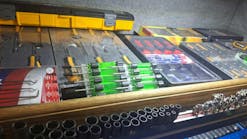Content brought to you by Professional Distributor. To subscribe, click here.
I’m sure that at one time or another you have encountered an unsolicited knock on your door or an annoying phone call where the person starts out with a memorized sales pitch: “Hello, my name is Joe or Josephine Smith, and I would like to tell you about my companies super new water treatment products, extended car warranty solution, magazine deals, and so on.
You can tell by their monotone voice and lack of enthusiasm they have memorized their pitch or are reading it from a script on the monitor in front of them. Some of you are probably polite and interrupt with a “no thank you” and hang up while others will utter an expletive and hang up or close the door.
If you have been reading the “Go Sell Something” columns in Professional Distributor magazine since my first in 2019, you will be surprised to hear I am totally sold on the idea of a written sales pitch. Not that I would ever want you to memorize it and recite it word for word to a customer.
Here’s what I’m talking about.
Creating your sales pitch
You’re about to introduce a new, expensive, and probably pretty technical product to your customers. You personally don’t totally understand the product yourself. This means that unless you really work on your presentation, your customers won’t have a chance of understanding it either, and they probably won’t buy it.
Here’s what I want you to do.
Get out all the literature, specifications, and, hopefully, your sample of the product. Start an outline of all the features you can come up with. Remember that features are what the point is, not what it does. For example, an on/off switch is a feature. The benefits are that it turns the machine on and off and saves electricity.
List the features in a logical explanation order and not particularly from the most to least important. If you do this on a computer spreadsheet, you will be able to easily cut, paste, and rearrange the features to get them in the exact order you want.
The reason you want to arrange this list in a logical order is threefold:
- As you know when giving a presentation, there are always interruptions, questions, and other disruptions. If you have your presentation in a logical order, you will find it easier to get back on track when you get back to selling, and you probably won’t miss some important features.
- If you present the highlights first, the other features might make your presentation boring.
- Once you do this, you will be in a position to become a real expert on this product.
Now that you have every possible feature you can find on your spreadsheet, add another column or two for the benefits of each of your listed features.
Most importantly, when you list the benefits besides the features, write them highlighting what those features mean to the user. For example, let’s say this new gizmo you’re selling comes with eight adapters to fit most major scopes on the market. Yes, this is important if you present it with “this gizmo comes with eight adapters to fit most major scopes on the market. This is important to you (Mr./Mrs. Prospect), so you will not need to buy any additional adapters and not need to look all over for the right adapter since all eight are stored right in the unit.”
Even though you will not be writing them on your spreadsheet, remember to trial close with these more important features and benefits.
“Do you like the convenience of all the adapters stored in the unit?”
Now, complete the task of listing all the benefits you can think of besides the features on your spreadsheet. This may take a while to do it right and may even involve a call to the company product manager or even the manufacturer, but in the end, you will truly be a product expert.
Practice your presentation
Hopefully, after this exercise, you will not have what I call the “rule of number 26.” The rule of 26 states that if you prepare yourself with knowledge of the top 25 features and benefits of a product, the very next prospect will ask you about number 26.
Now, you practice (not memorize) your presentation a few times, going through the features and benefits one by one and throwing in some trial closes as you go along.
At this point, if you are convinced you’re ready to make a customer presentation, it’s time to get out and give it a try.
A huge mistake that many people will make is to get all excited and make their first presentations to major prospects. This can easily spell disaster. Just like a Broadway play, they start out off-Broadway to get everything right.
Start out with a few of your smaller or less likely-to-buy prospects so that you can work the bugs of your presentation out. Small prospects will probably have most of the same questions and objections as big prospects, and you will now have the opportunity to smooth out your presentation before you hit the big-guy.
At this point, you have a decision to make. If this new gizmo is really complex, you may or may not want to make yourself a cheat-sheet of the features to have with you for your presentations.
I know you're thinking this will look unprofessional. What is unprofessional is forgetting a few of the major features and blowing the sales opportunity.
If I were still working for a tool manufacturer, I’m sure my marketing people would be providing you with a valuable sales tool like this. Unfortunately, most don't so you’re on your own to put this together. Additionally, I’m sure your district manager would be happy to distribute your feature/benefit sheet to the others in the district or region.
It’s simple: The more you know, the better you’ll do.
Now, go sell something.



